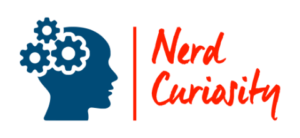Making the leap from Product Manager to Senior Product Manager is a significant career step. It’s a journey that not only requires a sharpened skill set but also a strategic mindset and a keen understanding of leadership. For many Product Managers, the allure of this advancement lies in the increased responsibility, the opportunity to shape product strategy, and the potential for a higher remit within the company.

To ascend to a Senior Product Manager, you need to take on higher-level responsibilities. Expand your impact by guiding junior PMs, owning more complex product initiatives, and enhancing cross-functional collaboration. Your growth will be marked by the depth of your strategic insights and the leadership you demonstrate among peers.
In the article that follows, expect to uncover detailed strategies for professional growth that cover essential skills, mentorship opportunities, and ways to visibly contribute to your company’s success. You’ll garner insights on aligning career aspirations with key business outcomes and learn how to position yourself as an invaluable asset to your product team and organization.
Understanding the Role of a Senior Product Manager

As you consider advancing in your career, grasp the distinct and dynamic roles and challenges that a Senior Product Manager faces. Let’s dissect their responsibilities and compare them to those of a Product Manager.
Defining Senior Product Manager Responsibilities
Senior Product Managers have a crucial role in steering the product’s vision and strategy. You must be adept at identifying user needs and market opportunities. Your tasks will often include:
- Defining a long-term product strategy that aligns with the company’s goals.
- Prioritizing and refining the product backlog to ensure key features are developed.
- Setting measurable goals to track the product’s progress and success metrics.
- Guiding cross-functional teams toward delivering quality product enhancements.
- Analyzing market trends to keep your product competitive and innovative.
In essence, Senior Product Managers serve as the link between the executive team and the product team, requiring strong communication and leadership skills.
Differences Between Product Manager and Senior Product Manager
While Product Managers focus on the day-to-day management of the product lifecycle, Senior Product Managers often take on additional complexities:
- Scope of Influence: Senior Product Managers usually have a broader scope, impacting strategic decisions across multiple products or product lines.
- Decision-Making Authority: You will likely have greater autonomy and responsibility in decision-making roles.
- Mentorship: Sharing your knowledge with junior team members, guiding their career paths, as mentioned in LinkedIn’s article.
- Interdepartmental Leadership: Expect to lead and collaborate with various departments, not just the product team.
- Experience Requirement: Senior roles call for extensive experience, typically around five years as a Product Manager.
With this advanced role, you work closely with other stakeholders to ensure the product’s success and drive the company’s product strategy forward.
Building Essential Skill Sets

Transitioning from a Product Manager to a Senior Product Manager involves enhancing some pivotal proficiency areas, from perfecting the foundational skills of your role to cultivating the communication and leadership qualities vital for high-level responsibilities.
Core Skills for Advancement
Your journey to a Senior Product Manager position calls for a deep dive into advanced product management techniques. This includes – but isn’t confined to – aspects such as prioritization frameworks, market positioning, and competitive analysis. Embrace learning new methodologies, like Agile and Scrum, and sharpen your technical acumen. Regularly involve yourself in different facets of the product lifecycle and practice making data-driven decisions. In this vein, consider how the ability to spec features precisely is invaluable to your role.
Soft Skills and Leadership Qualities
As you aim for the higher echelons of management, your soft skills become as indispensable as your technical ones. Effective communication is at the forefront; it’s the cornerstone that allows you to articulate vision, align teams, and encourage stakeholder buy-in. The capacity to inspire and motivate your colleagues is equally significant, and can notably affect your team’s efficacy and morale. Hone your problem-solving and conflict-resolution skills. Remember, empathy and taking on senior PM tasks in your current role will build trust and demonstrate your leadership capabilities.
Strategic Thinking and Business Acumen
Senior Product Management isn’t just about managing products; it’s about steering them in a direction that aligns with the organization’s business goals and market needs. You’ll need to exhibit a solid understanding of business models, assess ROI, and forecast market trends. Encourage yourself to think critically about the bigger picture, and make decisions that will not only affect your product but also influence the broader business landscape. An understanding of UX to add value for both the business and the customer is part of this strategic mix.
Gaining Relevant Experience and Education

Transitioning from a product manager to a senior product manager involves building upon a solid foundation of expertise and learning. Your journey will weave through gaining impactful experiences, bolstering academic credentials, and fostering professional relationships.
Professional Experiences That Matter
In your quest for advancement, prioritize gaining responsible oversight on key projects. Your career path will greatly benefit from experiences that showcase leadership and the ability to deliver successful product initiatives. Not just any experience counts; target roles where you can demonstrate:
- Strategic planning and execution
- Data-driven decision making
- Management of cross-functional teams
Employers look for evidence of progressively complex project management and tangible contributions to product success.
Academic Qualifications and Certifications
While not always mandatory, having a strong educational background can set you apart. An MBA or a specialized Master’s degree in a relevant field might provide you with advanced knowledge and a competitive edge. Additionally, consider product management courses that end with certification; they sharpen your skills and prove your commitment. Consider institutions with courses that are well-regarded in the industry:
- General Business Management
- User Experience Design
- Technical Product Management
Learning From Industry Leaders and Networking
Your career goal to become a senior product manager should include learning from the best. Seek mentorship opportunities. These experienced guides often provide unparalleled insight that can help you navigate your product manager career path more effectively. Remember that networking is not only about meeting new people; it’s about building relationships that can lead to:
- Knowledge sharing
- Job opportunities
- Collaborations on projects
Engage actively in industry conferences, online communities, and local meetups to expand your circle and position yourself for senior roles.
Mastering Product Management Tools and Technologies

To become a Senior Product Manager, you’ll need to hone your skills with tools that streamline your workflow and amplify your impact.
Essential Tools for Product Managers
Jira and Slack are fundamental tools in your arsenal for efficient product management. Jira organizes and tracks your project tasks, ensuring nothing slips through the cracks. Slack optimizes communication, keeping you and your team connected. Familiarize yourself with features beyond the basics to leverage their full potential in managing timelines and fostering collaboration.
- Jira: Issue tracking, Agile project management
- Slack: Team messaging, Integration with other tools
Embracing AI and Software Development Trends
Keep a keen eye on evolving technologies such as AI that can predict customer preferences and automate tedious tasks. Understanding the link between product strategy and the latest software development nuances will give you an edge. For example, integrating AI for personalized user experiences can transform your product’s trajectory.
- AI: Automation, Predictive analytics
- Software Development Trends: Agile methodologies, Continuous integration
Analytical Skills and Data-Driven Decision Making
Your ability to dissect data with tools like Google Analytics and Hotjar distinguishes you from the crowd. Use Google Analytics to track user behavior and Hotjar to visualize their interaction with your product. By making decisions grounded in data analysis, you lay the foundation for your ascent to a Senior Product Manager role.
- Google Analytics: User behavior analysis, Traffic source tracking
- Hotjar: Heatmaps, User session recordings
Perfecting the Art of Strategy and Vision

Transitioning from a Product Manager to a Senior Product Manager mandates a keen focus on developing a powerful product vision and crafting strategic roadmaps that are in tandem with your business’s objectives and the ever-evolving market landscape.
Developing a Forward-Thinking Product Vision
You must envision the ideal future of your product and its users. A bold product vision acts as a lighthouse, guiding the entire team towards a common destination. To cultivate this vision, immerse yourself in market research; understand emerging trends and the specific pain points of your audience. Craft a vivid and compelling picture of what solving these issues looks like, setting the stage for innovation and market leadership.
Crafting and Adjusting Product Roadmaps
Your product roadmap is your blueprint to success, a detailed layout of how to realize your product vision. However, it’s not set in stone. Continuously measure your roadmap’s effectiveness against strategic decisions and real-world feedback. Adjust your plans to maintain a sharp focus on objectives while navigating through the complexities and opportunities that surface. Leverage insights to refine your path, ensuring a robust and flexible approach.
Aligning with Business Goals and Market Needs
Balance is key. Your product vision and roadmap should not only be ambitious but also in full harmony with your organization’s business goals. Create harmony between these aspirations and the realities of the market by embracing market research. Understand where your customers’ desires intersect with what your business aims to achieve. This alignment fosters a strategic clarity that propels you towards leadership within your industry.
Navigating Career Progression

Advancing from a Product Manager to a Senior Product Manager requires strategic career moves, a deep understanding of product management, and awareness of salary benchmarks within the industry.
From Product Manager to Leadership Roles
To climb the ladder from a Product Manager to a Senior Product Manager, you need to demonstrate leadership capabilities beyond your current responsibilities. Start by leading cross-functional teams and initiating projects that align with the company’s long-term goals. Grow your influence by mentoring Associate Product Managers, as this experience can pave the way for a director-level role.
Understanding the Path to CPO and VP of Product
The journey to Chief Product Officer or VP of Product demands a profound grasp of the product lifecycle and market strategy. Continue to expand your skill set, and look for opportunities to lead major initiatives. Familiarizing yourself with different aspects of the business can provide a significant edge when aiming for these top-tier positions.
Salary Expectations and Job Market Outlook
While salaries vary based on location, experience, and company size, being promoted to a senior role typically leads to a notable increase in compensation. On average, a Senior Product Manager salary can be quite competitive. The job market for product management is growing, indicating healthy prospects for those eyeing a promotion. Keep track of the market trends to negotiate effectively or when considering new opportunities.
Conclusion

Embarking on the journey to a Senior Product Manager role, you must recognize it’s not just a promotion but a new horizon in your career. Equip yourself with advanced skills and a strategic mindset; You’re set to make a significant impact.
- Focus on cross-functional leadership and market understanding.
- Excel in communication, both verbal and written.
- Embrace mentorship and continuous learning.
Your transition relies on experience and your unique ability to drive product visions to real-world solutions. Remember, your path will be unique, much like the products you aspire to oversee.
- Keep showcasing your initiative and creativity.
- Balance attention to detail with a grasp of the big picture.
In doing so, the leap to Senior Product Manager feels less like a leap and more like a natural progression. Networking with peers, both within and outside your current organization, provides varied perspectives and new opportunities. Always be ready to take on new challenges and travel beyond your comfort zone; That’s where growth happens.
Cultivate these qualities, and your journey from Product Manager to Senior Product Manager could be as transformative as the products you aim to develop. Reach for your goals with confidence—your next significant achievement is just around the corner.
